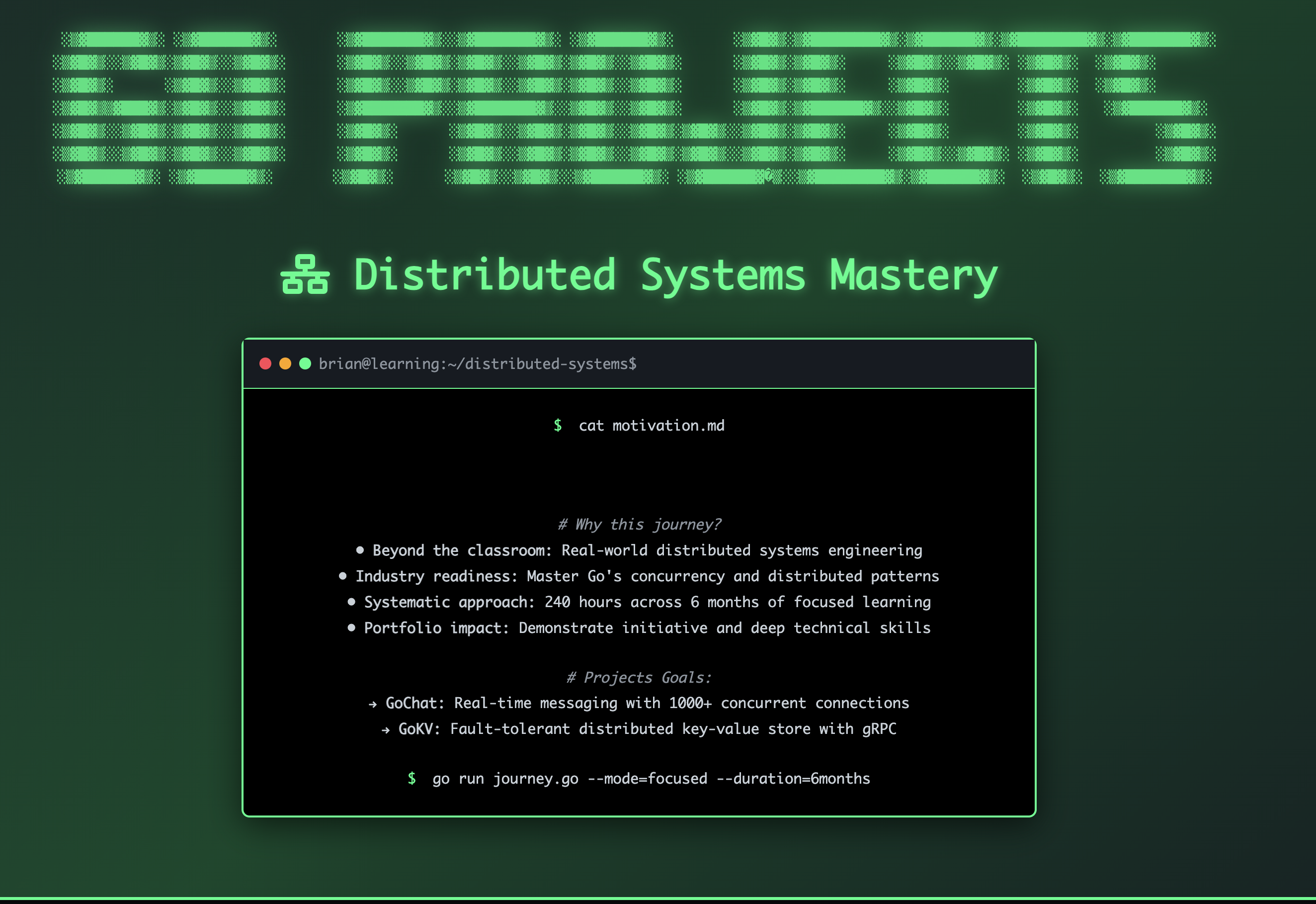Currently learning distributed systems.
Building a chat messaging app.
🛰️ Some distributed systems span the globe—literally.
I constantly try to improve
My tech stack
React.jsExpressTypescriptjava
ScalaNext.jsGraphQLC++
In distributed systems, failure is not an edge case is the norm.
The Inside Scoop
🧠 The CAP theorem says you can only pick two: Consistency, Availability, or Partition Tolerance.
Shoot me an email.

A small selection of recent projects
My work experience
Kind words from coworkers
Brian and I worked on the same team at Codesmith. I can say without reservation that Brian is one of the most brilliant engineers I have ever worked with. His ease and confidence in solving complex problems or adopting new technologies really stands out even in a talented group. Brian does not shy away from new challenges, nor does he let setbacks slow him down. Brian was also very involved in mentoring junior developers. He has a way of explaining impenetrable or intimidating concepts in very understandable ways and making them feel approachable. He will always bring added value to any team he is on. He is an indispensable part of our team and I would work with him again in a heartbeat.
Alex McPhailFull Stack Software Engineer @ MNTNBrian is an extremely passionate engineer. He always strives to come up with innovative ideas and provides tremendous assistance to the team. During our time at Kensa, he always took on new challenges and solved problems utilizing his exceptional algorithms skills. Brian is also able to think deeply about the user experience and overall requirements of the application. He will be a great contributor to any team he joins.
Brian PhamSoftware EngineerBrian is an excellent software engineer who is passionate about writing high-quality code, and he's delightful to work with. When we worked together on the open-source product Kensa, Brian often volunteered to work on the more complicated tasks because he likes the challenges, and he's often able to find brilliant approaches to solving problems.
Tommy LiAWS Certified Cloud Practitioner
My Software Development Approach
Planning & Design
During this stage we're gathering requirements, defining objectives, and designing the architecture or blueprint of the software. This phase ensures clarity in what needs to be built and how.
Development & Testing
This is the second stage and focuses on writing the code to create the software and rigorously testing it for bugs, functionality, and performance. The goal is to ensure the product is robust and meets specifications.
Deployment & Maintenance
The last of the three phases, and in here software is released to users, and any necessary updates, bug fixes, or improvements are made over time. This ensures the software remains functional and relevant.








